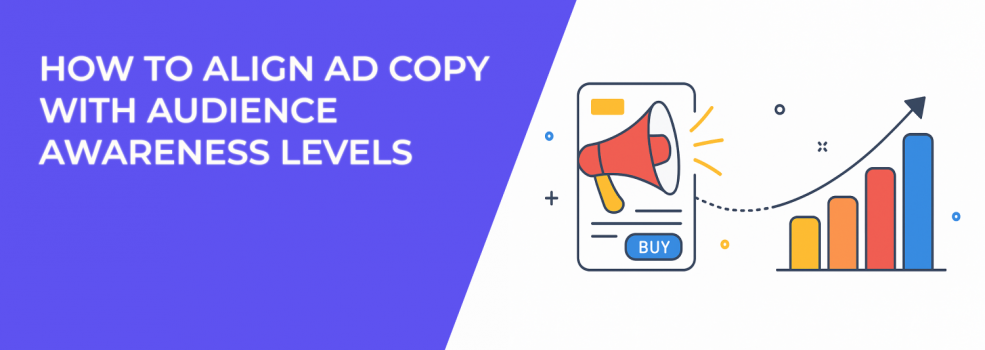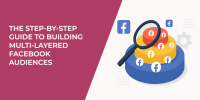You can’t talk to everyone the same way. Especially not in ads.
Your audience might be totally unaware of what you offer. Or they might be days away from buying. If your copy doesn’t match where they are in their journey, your ad will get skipped — no matter how good the creative looks.
Let’s break down how to write ads for each stage of audience awareness. You'll learn how to stop wasting impressions and start speaking to the right mindset.
First, Understand the Awareness Spectrum
This framework isn’t new — but most advertisers still skip it. Eugene Schwartz first laid it out in Breakthrough Advertising, and it’s still one of the most useful tools in ad writing today.
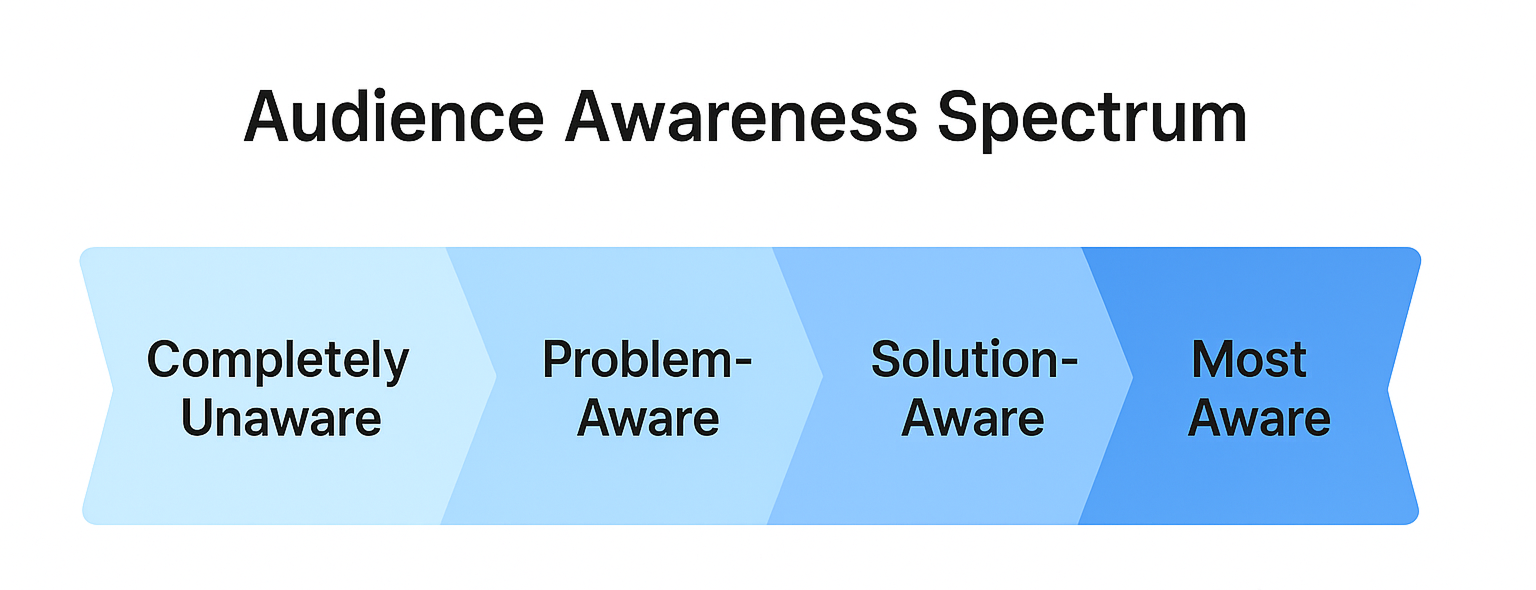
There are five key levels of awareness:
-
Completely Unaware — they don’t even realize they have a problem.
-
Problem-Aware — they’ve spotted a problem, but don’t know what to do.
-
Solution-Aware — they know what kind of solution might help.
-
Product-Aware — they’re comparing you to others.
-
Most Aware — they just need a final push.
Each stage requires a different kind of message. Copy that converts at one level might flop at another. So let’s go level by level and look at how to write ads that fit.
1. Writing for the Completely Unaware
At this stage, people aren’t looking for a product — they don’t even know they need one. Direct selling won’t work here. Your job is to spark interest or trigger a reaction.
Use broad, curiosity-driven angles:
-
Emotional hooks that reflect a common but overlooked frustration. This helps the viewer feel seen, even if they don’t yet understand the problem.
-
Unexpected stats or questions that interrupt the scroll. These build intrigue and create a desire to learn more.
-
Visual storytelling that mirrors the viewer’s daily reality — so the ad doesn’t feel like an ad.
Example:
“Most advertisers are ignoring this one detail — and it's costing them thousands.”
This kind of opening works because it raises a question without sounding promotional. It opens a mental loop the viewer wants to close.
You can also explore how to write ad copy that converts attention into clicks for more practical structures.
2. Writing for the Problem-Aware
Now they do know something’s wrong. Maybe their lead quality is poor. Maybe ad fatigue is driving up costs. They’re frustrated — and scanning for explanations.
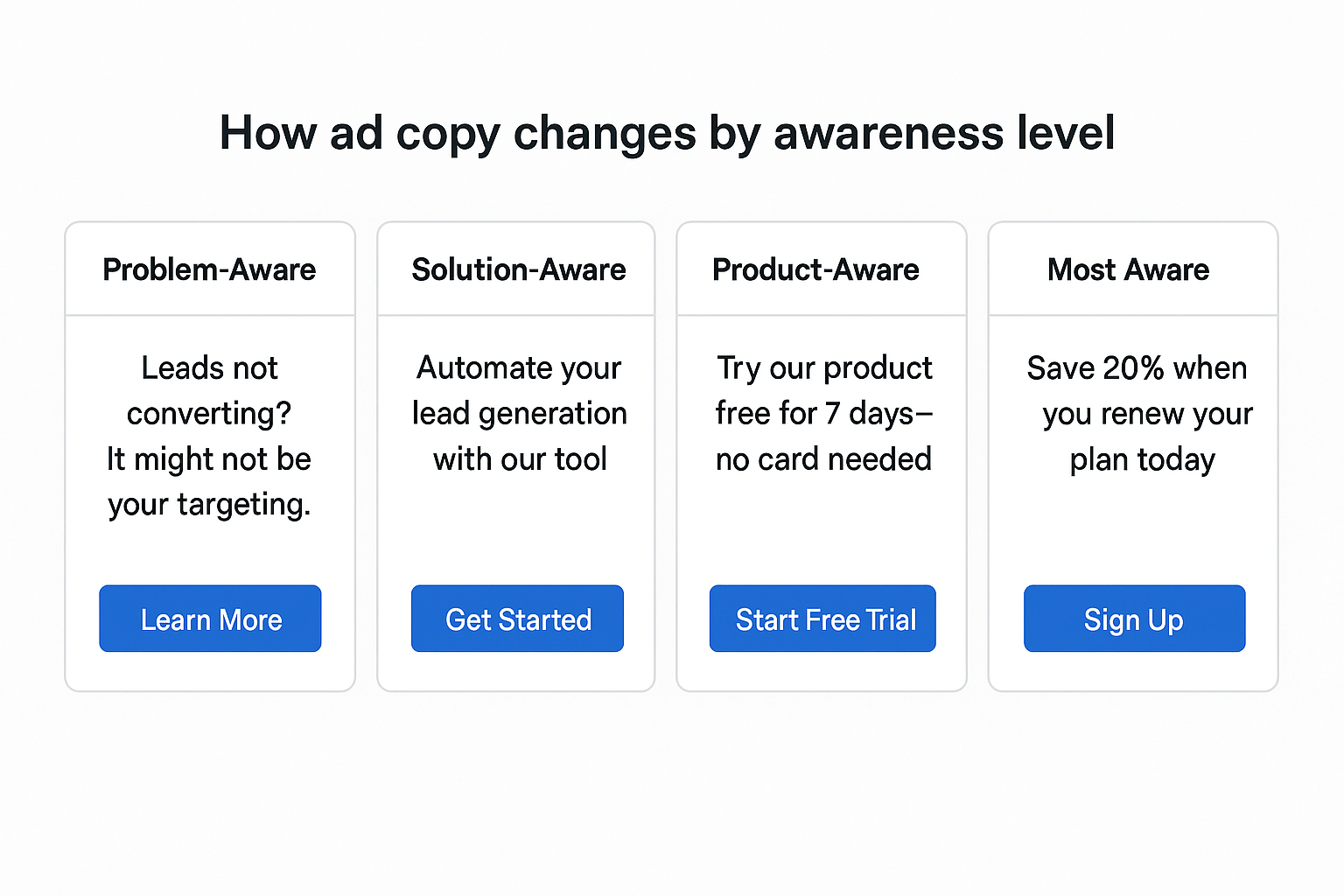
To write effectively for this stage:
-
Be specific when describing the problem. The more clearly you name it, the more likely they are to trust you understand it.
-
Highlight what’s at stake if it’s not fixed. This creates urgency, not just curiosity.
-
Introduce the idea of a solution, but don’t go straight into selling.
Try copy like:
“If your Facebook ad CTR drops after 3 days, you're not alone. Here's why it happens — and how to stop the slide without launching new creatives.”
This type of messaging tells them they’re not crazy, they’re not alone, and there’s a fix — but you’re not pitching just yet.
Also, if your campaign performance is dropping fast, take a look at Ad Fatigue on Facebook: How to Spot It Early and Fix It Fast.
3. Writing for the Solution-Aware
At this point, people know what kind of help they need — they just haven’t picked a tool or method. This is your chance to introduce your category as the better approach.
Here’s how to do that:
-
Educate on why common solutions don’t work as well anymore. This builds credibility and urgency.
-
Show what makes your approach unique — and why it matters.
-
Use specific language, not buzzwords. Speak in plain, practical terms.
Example:
“Lookalike audiences used to deliver great leads. But in 2025? They miss the mark. Smart marketers are turning to intent-based data — here’s why.”
This positions your solution as the evolution of what they already know.
For targeting guidance that supports this stage, see Custom vs Lookalike Audiences: What Works Best for Facebook Campaigns.
4. Writing for the Product-Aware
These people already know about your product. They’ve seen your name. Maybe they’ve clicked. But they haven’t said yes.
So, what works now?
-
Show proof — user results, testimonials, feature breakdowns.
-
Highlight a unique edge — what makes your tool easier, faster, more accurate?
-
Make the next step feel obvious.
Here’s an example:
“Other platforms show you interest-based data. We go deeper. Our algorithm maps actual customer behavior — not just guesses. See it in action.”
It works because it doesn’t waste time explaining what the product does. It focuses on what makes it better.
If you’re struggling to convert this segment, here’s how to finish the Facebook learning phase quickly so your optimizations actually take hold.
5. Writing for the Most Aware
This is your hottest segment. They’ve seen the product. They know what it does. The job of your copy now is to remove final hesitation.
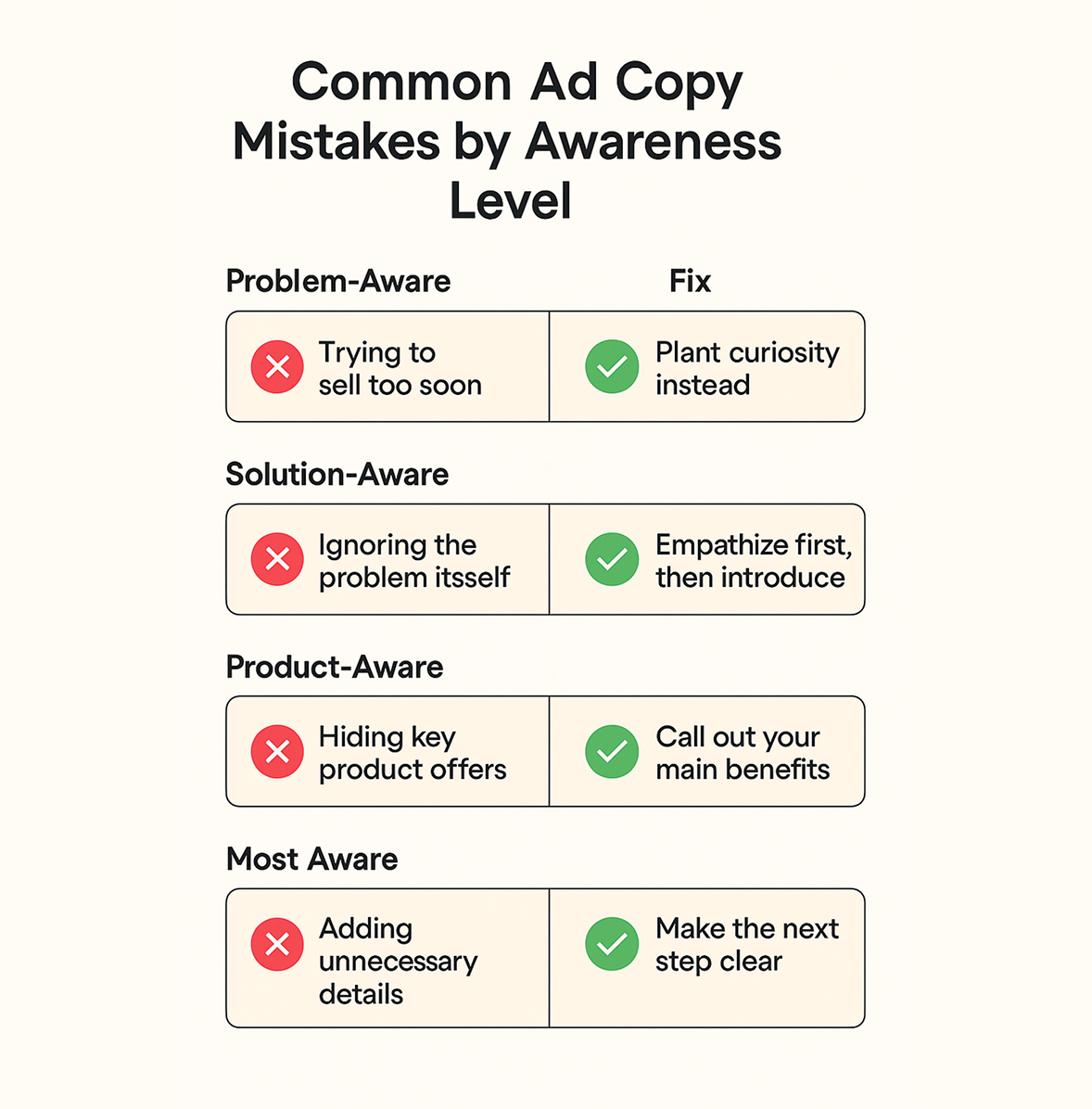
To write for this stage:
-
Be clear and direct. No fluff. Just the benefit and CTA.
-
Add a light urgency trigger (if it makes sense), like a deadline or benefit expiration.
-
Make signup feel frictionless — no forms, no pressure.
Example:
“Start your free trial today. Get full access — no credit card required.”
Simple works best here. These users don’t want another reason to think. They want a reason to act.
Need help nudging these prospects without repeating yourself? Read Retarget Smarter: Reinforce Your Message, Don’t Repeat It.
Relevance Over Reach
If your copy isn’t aligned with what your audience already knows and feels, you’ll lose them — no matter how good your creative or targeting is.
Message-audience fit isn’t a bonus. It’s the foundation.
So next time you write an ad, stop and ask: where is this person in their decision-making journey? That answer should shape everything — your hook, your tone, your CTA.
